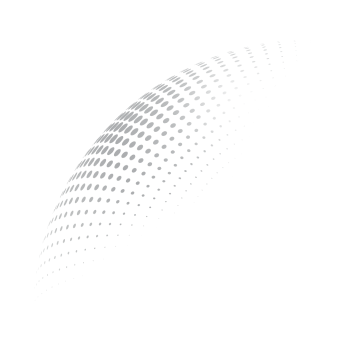Streamlining SOAP Notes: How Voice AI is Revolutionizing Clinical Documentation
People in healthcare spend countless hours on the process of documenting their encounters with patients, with the clinical documentation eased by help of SOAP Notes. This essential task of their day has now metamorphosed into a significant burden, becoming a contributing factor in physician burnout and also reducing the available time at hand for patient care.
Enter voice AI technology – a revolutionary solution that’s transforming how medical professionals approach clinical documentation through advanced speech-to-text software for doctors and AI-powered clinical documentation systems.
Understanding What SOAP Notes Are
SOAP Notes when expanded is:
Subjective
Objective
Assessment
Plan
Understanding the meaning of SOAP notes and the SOAP medical abbreviation or acronym helps ensure patient records are detailed and covers every aspect while facilitating communication between healthcare providers.
Subjective
As the first heading of the SOAP note, it entails the documentation that is marked by subjective experiences, personal feelings and perspectives of the patients as reported or as witnessed by a close one.
It details the onset of the symptoms in the patient, provoking factors, the region on their body that is affected, the severity of the symptoms and the time duration they have lasted.
In addition, a medical history is mapped to better understand the patient.
Objective
As the name suggests, the second heading of the SOAP note details the objective data that can be gathered from the patient’s encounter. It can range from vital signs, to physical exam results, lab data, imaging results and more.
The objective part is more about the signs and not the symptoms, as part of the objective information that can be collected from the patient encounter.
Assessment
This combines the S and O of SOAP and with a synthesis of the two, the intent is to arrive at a diagnosis, through assessing the patient’s current status and analysis of the problem, possible interactions for the problems, and changes in the status of the patient.
Plan
This final and last section of the SOAP notes encompasses the need for additional testing and consultation with other clinicians to address the patient’s issue and the next steps to be taken. More testing, more therapy, more specialist referrals or consults can be determined in this step.
These notes medical professionals rely on has become integral to various documentation types, from doctors notes and therapy notes to specialised radiology reports. This standardised approach to SOAP documentation ensures consistency whether creating a note from a doctor template or developing custom clinical narratives for different medical specialties.
Despite their clinical value, SOAP notes present a lot challenges in traditional documentation processes. The structured format, while thorough, requires careful attention to detail because it involves multiple steps and time that could otherwise be spent with patients or clinical decision-making.
The consequences extend beyond individual physician wellness. When healthcare providers spend excessive time on documentation, patient interaction suffers. Physicians may feel rushed during appointments, leading to decreased patient satisfaction and potentially compromised care quality. The administrative burden also contributes to the healthcare workforce shortage, as many physicians consider leaving practice due to documentation stress.
The Voice AI Solution: Augnito’s Omni and Spectra
Voice AI technology offers a transformative approach to clinical documentation, addressing the core challenges that make SOAP note creation burdensome. Advanced healthcare speech recognition systems can now achieve over 95% accuracy in voice recognition, making them reliable tools for medical documentation and establishing new standards for transcription accuracy in medical AI.
Modern medical voice AI solutions like Augnito’s Spectra and Omni platforms leverage sophisticated natural language processing to understand medical terminology, context, and documentation structures. These AI medical transcription software systems can automatically organise spoken information into the expected SOAP note format.
The technology works by the AI listening to physician dictation or patient encounters, processing the audio through advanced algorithms, and generating structured clinical notes. Machine learning capabilities allow these clinical speech recognition solutions to adapt to individual physician speech patterns, medical specialties, and institutional preferences, improving accuracy over time. This represents a significant advancement in medical dictation software capabilities, moving beyond simple transcription to intelligent document creation.
Success in Speed and Efficiency
- Proven Results: 3,400 physicians generated 300,000 notes using AI medical scribe technology, dramatically reducing documentation time
- Real-time Processing: Healthcare voice recognition software enables physicians to complete SOAP notes during patient encounters, eliminating post-visit documentation sessions
- Enhanced Accuracy: AI doctor transcription capabilities and speech recognition in healthcare reduce errors common in traditional dictation methods.
Benefits for the Patient
Voice AI restores focus to patient care by automating documentation through healthcare AI solutions. Medical dictation AI allows physicians to dictate observations naturally while maintaining patient engagement. Advanced speech to text healthcare systems create doctors notes seamlessly in the background, enabling better eye contact and therapeutic relationships during clinical encounters.
Essentials for Implementation
Healthcare organizations must evaluate clinical documentation software for hospitals based on:
- EHR integration capabilities and HIPAA compliance
- Transcription accuracy in medical AI across specialties
- Training requirements for medical transcription AI software
- ROI from automatic clinical notes AI solutions
- Specialized tools like radiology voice recognition tools and wearable medical devices integration
Emerging capabilities include ambient clinical intelligence, predictive text generation, and automated clinical decision support. Organizations implementing AI-powered clinical documentation early gain competitive advantages, similar to Apollo Hospitals growth story in technology adoption.
Voice AI technology challenged traditional SOAP documentation by putting its spin on it, in less time, in less effort, effectively and readily.
The best AI apps for healthcare documentation, including Augnito’s Omni and Spectra represent the future where what SOAP means in medical terms becomes synonymous with efficient, AI-powered healthcare workflows benefiting providers, patients, and healthcare systems alike.
- Streamlining SOAP Notes: How Voice AI is Revolutionizing Clinical Documentation - August 13, 2025
- Augnito Omni: One Solution for Clinical Documentation, Across Every Workflow - August 13, 2025
- Augnito’s Clinician Advisory Council: A Deep-Dive with Dr. Ramy Khalil - February 7, 2025
